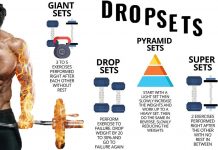🚨 GAINS CHEST GUIDE

📌 Ever since we started training, people have told us that inclines are great for the upper pecs, while flat and decline presses are great for the lower pecs.
Turns out, that’s pretty much the case!
As we lift our arms overhead (shoulder flexion), we shorten the clavicular portion of our pecs. So the greater the incline, the more stress we place on the clavicular (upper) head of the pecs and anterior deltoid.
[wp_ad_camp_1]
📌 In contrast, with flat benches (as well as declines), we decrease the amount of shoulder flexion, and thus place more stress on the sternal (lower) head of the pecs.

[wp_ad_camp_2]
📌 So we can play with the angles to target different areas of our chest
📌 Bonus Tip: Incorporating more pulling exercises!
Look, if your posture sucks, you need to fix it ASAP. Your slouched, rounded shoulders are “hiding” whatever pec development you do have, and continuing to train them incessantly is a fast track to nowhere.You have to work on your pulling muscles as much as you work on your pushing muscles
[wp_ad_camp_4]

[wp_ad_camp_3]
✅ The push-up is a closed chain exercise while the bench press is an open chain exercise. In a 2018 study, they compared toe push-ups, knee push-ups, and bench press. We’ll focus on the toe pushups and bench press. They tested 3 different grip widths (narrow, middle, wide).
✅ Limitation of Push-Ups
It is not as easy to increase the activation of the primary muscle groups during this body weight exercise. The intensity and muscle activity is limited by the body weight. If you wanted to increase the intensity, you would have to use a weighted vest, or use a resistance band. In a study about using a resistance band for push-ups showed that there is similar activation of the pec major and anterior deltoid as a bench press while still maintaining activation of the abdominals.

















































